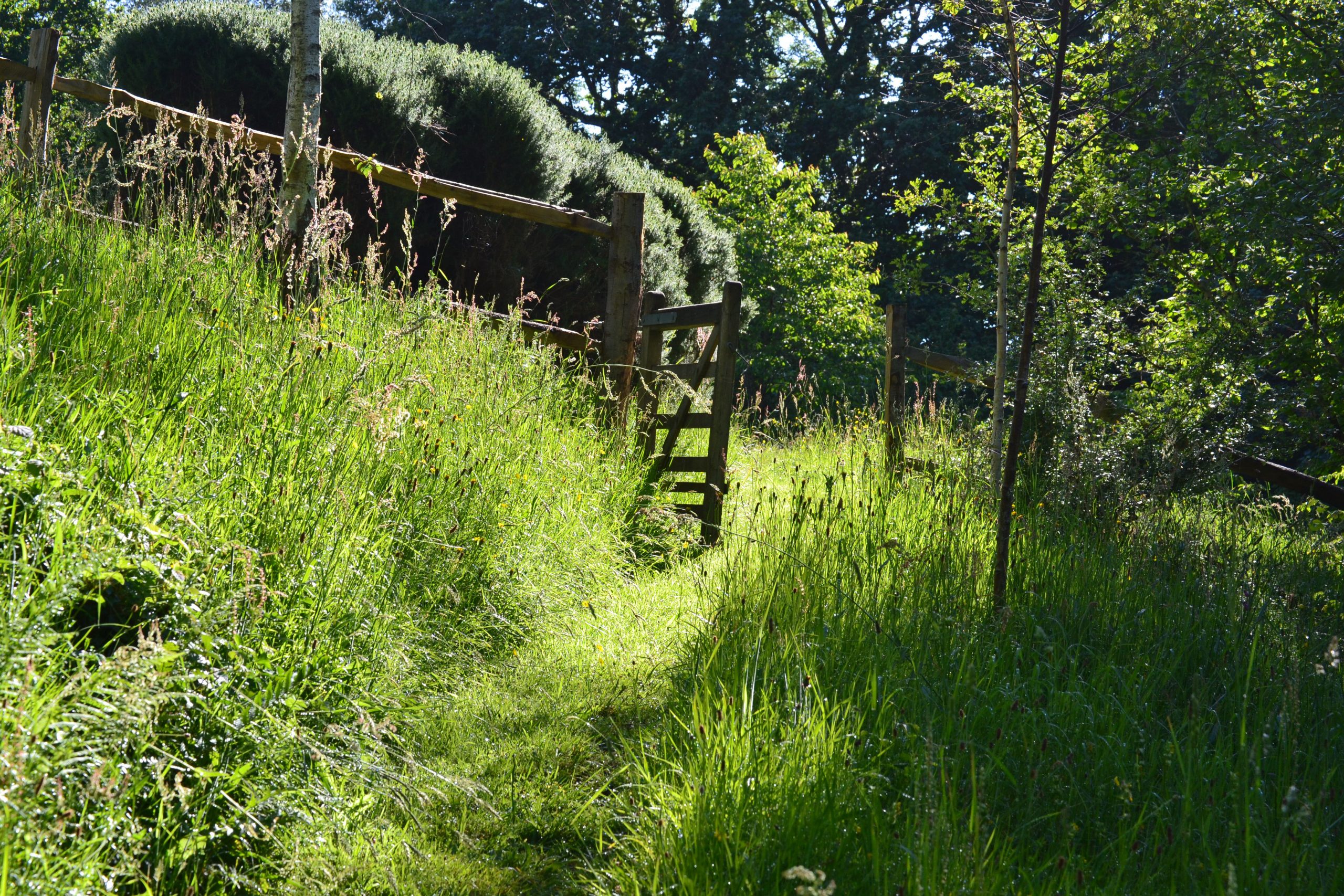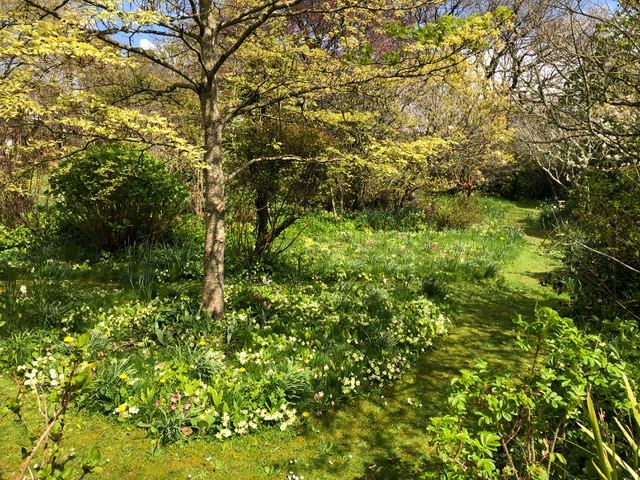David Smart and Steve Wileman
Higher Coombe, Dartmoor
The magical evolution of an unremarkable sheep and pony paddock.
We moved to Dartmoor National Park in 2004. Our land at Higher Coombe straddles the beautiful River Mardle – an acre of formal garden/veg patch/woodland on one side and 1.7 acres of south-facing meadow on the other, which was heavily grazed by sheep and ponies before we arrived. The meadow consisted largely of coarse grass, hundreds of dandelions in spring, as well as patches of bramble, nettle and bracken. The boundaries were very overgrown and we began a programme of hedge laying over several years, leaving mature hawthorn, oak, ash, hazel and elder at intervals. Looking west is a view to the moor, and looking east you can see the outskirts of Torbay on a clear day.

The meadow runs steeply down to the river and cannot be cut easily with machinery, so helped by local farmers we employ a simple grazing regime. We’ve had a go with sheep and Shetland ponies. Last autumn we hosted four very friendly Jersey heifers (for about two weeks) who munched things down at great speed.
We aim to put animals in during the autumn and have grazing over by January, enabling masses of primroses and violets to get off to a good start.
We mow a single path from one end to the other throughout the summer months. It’s a mixed habitat and we have a patch of gorse, an area of bracken (which occasionally needs bashing back), and never seem to get on top of brambles that just want to run under the thatch that builds up around boundaries. So things largely just get on with it.

We have a bit of a hogweed problem – but the insects just love it! We let it flower, then try and cut the heads off before they set seed. Definitely not our favourite job!
The species-rich meadow we now love and enjoy has evolved over the past 15 years. We started by ceasing to graze in spring and summer allowing the grass to grow. Then we introduced yellow rattle, seeding the mole hills which pop up all over in winter. Our Jack Russell, Monty, helps spread the seed as it ripens through summer, or we just flick it around from time to time. The rattle has done an amazing job, reducing vigorous grasses, and allowing other flowers to get a hold.
In the last five years things seem to have reached a tipping point and we see a progression of wild flowers all of which have arrived by themselves or were there already, just waiting to be given a chance.
In spring, the lower banks are filled with primroses, bugle and violets (we have introduced a few cowslips and fritillaries to see how they get on). In early summer, swathes of speedwell and bird’s foot trefoil appear, covering the large hills built by yellow meadow ants. We are the proud owners of just a couple of early purple orchids!

As summer progresses we see lesser stitchwort, common sorrel, red and white clover, wild carrot, meadow buttercup, goat’s beard, common yarrow and pignut. When you think it’s all over, along comes angelica, patches of hemp agrimony and heath bedstraw as well as stands of common knapweed that host a small army of fantastic six spotted burnet moths.

In recent years there has been a dramatic increase in the number of butterflies that call by or have taken up residence – orange tip, meadow brown, marbled white, ringlet, silver washed fritillary, common blue, comma, red admiral, peacock– and in 2019 we lost count of the many painted ladies who arrived. In July, the meadow seems to vibrate with insect life. With the River Mardle bordering the land, we also see metallic blue (male) and green-bronze (female) demoiselles who venture up the lower banks from time to time in search of each other.
The meadow is a great stopping off point for buzzards. Woodpeckers feast on the ant hills, and in autumn 2019, a gang of gold finches feasted on knapweed seed for a good couple of weeks. Grass snakes visit, as do slow worms, and we are never quite sure what else is in residence when our backs are turned.
The transformation has been truly magical and remains a work in progress as we both learn more.
Other "Me and my Meadow" stories

Robert Powell and Jane Emberson
Dousland, near Yelverton
Establishing patches of meadow and other habitats in a garden in west Devon brings in the wildlife

Mike and Gill Cunniam
Holne, Dartmoor
A one acre garden nature reserve - wood meadow, pond, plants for pollinators, bird and bat boxes. All helping to attract a lot more insects and bird life

David and Jackie Crook
Buckfastleigh
David and Jackie have turned five acres of heavily grazed pony paddocks at Buckfastleigh into flower-rich grasslands alive with wildlife.

Bronwen & Martin Gundry
Blackdown Hills AONB
A 38 acre farm with a variety of habitats, including unimproved pastures and hay meadows
